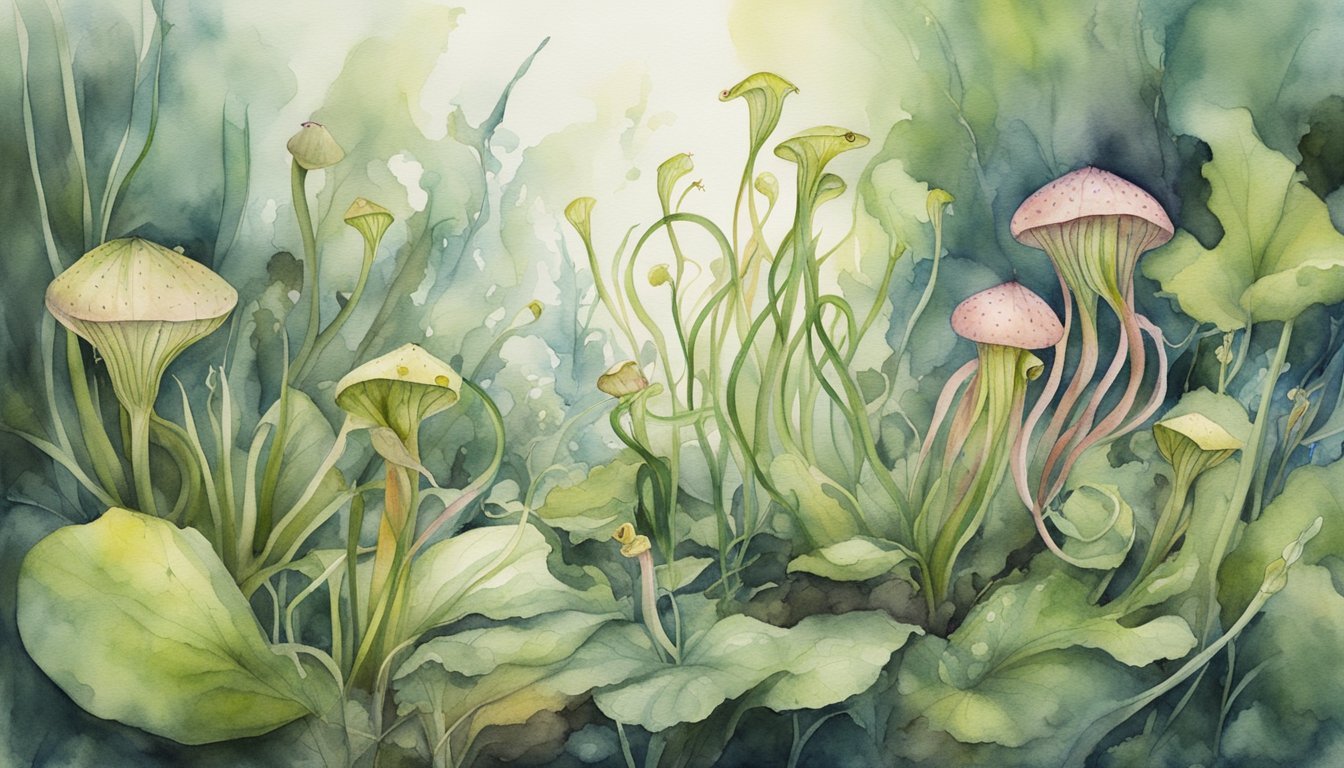Understanding Carnivorous Plants
Carnivorous plants have fascinated people for centuries with their unusual feeding habits and diverse range of trapping mechanisms. They are a remarkable group of plants that have adapted to extracting nutrients from animals.
Defining Carnivory in Plants
Carnivory in plants refers to the ability to attract, capture, and digest prey, primarily insects. Charles Darwin was among the first to study these plants, and he described the Venus flytrap, Dionaea muscipula, extensively. While most plants obtain their nutrients from soil, carnivorous plants often grow in environments with nutrient-poor soil and have adapted to supplement their diet with the nitrogen and other nutrients from their prey.
Adaptations and Diversity
The diversity of carnivorous plants is simply astonishing; with over 600 recognized species, they boast highly specialized and unique adaptations. These adaptations include modified leaves that function as traps, such as the sticky mucilage of sundews or the slippery walls of the pitcher plants. Some use passive trapping mechanisms while others, like the Venus flytrap, actively snap shut on their prey. These modifications are evidence of both convergent and divergent evolution within different genera.
Carnivorous Plants in Their Habitats
Carnivorous plants are often associated with damp, acidic environments like bogs and swamps. These locations have wet soil that is typically low in the essential nutrients plants need to thrive. Species such as the Sarracenia, or North American pitcher plant, and the tropical pitcher plants of the genus Nepenthes have become flagship species for these habitats. Despite their niche environment, carnivorous plants have a global distribution, with species found from the United Kingdom to South America. Each species has developed a trap mechanism suitable for their specific environment, whether it’s the water-filled traps of Utricularia or the sticky leaves of Drosera.
Interactions and Cultivation of Carnivorous Plants

Carnivorous plants captivate with their ingenious feeding strategies and charm gardeners with their exotic allure. They are a remarkable example of adaptation, luring, capturing, and digesting prey to supplement their nutritional intake in nutrient-poor environments.
Feeding and Digestive Mechanisms
The feeding and digestive mechanisms of carnivorous plants are as fascinating as they are diverse. The Venus flytrap snaps shut when an insect triggers its sensitive hairs, while the Sundew uses a sticky resin on its tentacles to entrap prey. Pitcher plants, such as the Sarracenia flava, lure insects into their cavity—a pitfall trap—where they slip and fall into a pool of enzymes and are digested. These plants have evolved a variety of trapping mechanisms, including snap traps, pitfall traps, and flypaper-like traps to secure nutrients that are often scarce in their native habitats.
Cultivating Carnivorous Plants at Home
For enthusiasts looking to grow carnivorous plants at home, it’s necessary to replicate their natural conditions. Good drainage, acidity, high humidity, and plenty of light are essential. The soil must be poor in nutrients, often a mix of peat and sand, accompanied by frequent watering with distilled water or rainwater to prevent mineral buildup. It’s critical not to fertilize these plants traditionally, as they obtain necessary nutrients through their consumption of insects and other small invertebrates.
Ecological Roles and Environmental Impact
Carnivorous plants like Nepenthes (Tropical Pitcher Plant) and local species such as the Venus flytrap perform significant ecological roles, often forming symbiotic relationships with various species and contributing to nutrient recycling in their ecosystems. For instance, bacteria dwelling within the fluid of pitcher plants assist in breaking down captured prey, supplementing the plant’s digestive enzymes. These plants are indicators of environmental health, particularly since many thrive in specialized habitats like bogs, which are sensitive to changes in water quality and land use practices. Protecting carnivorous plants means preserving the environmental integrity and biodiversity of these vulnerable ecosystems.

